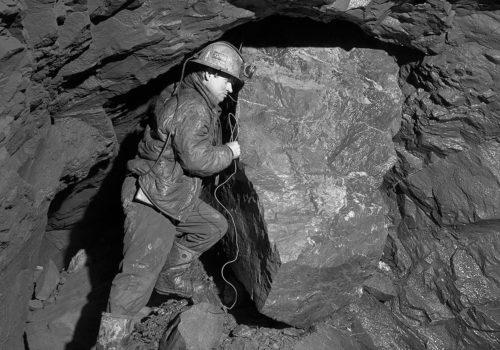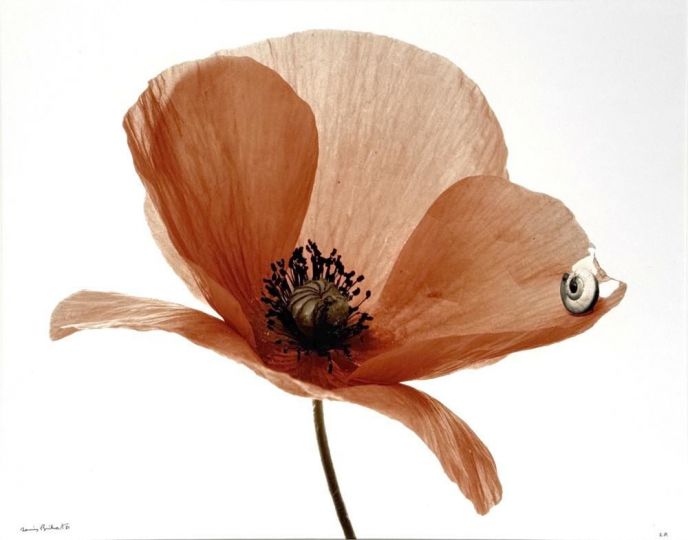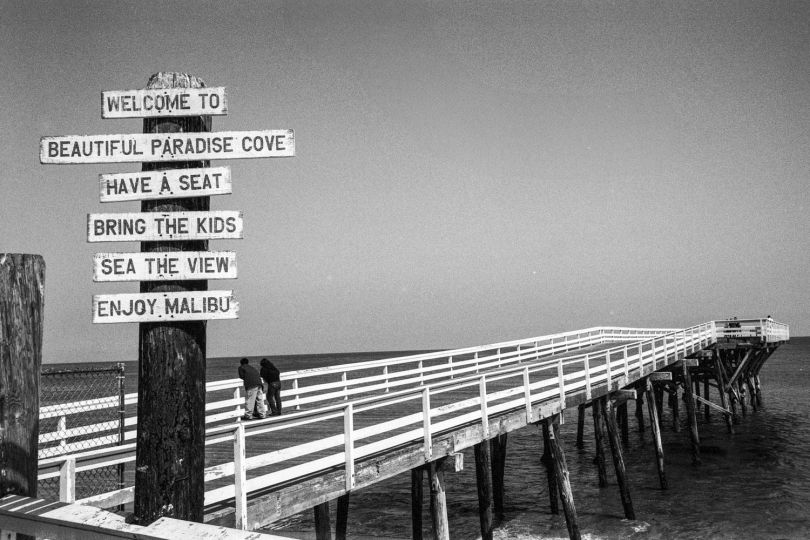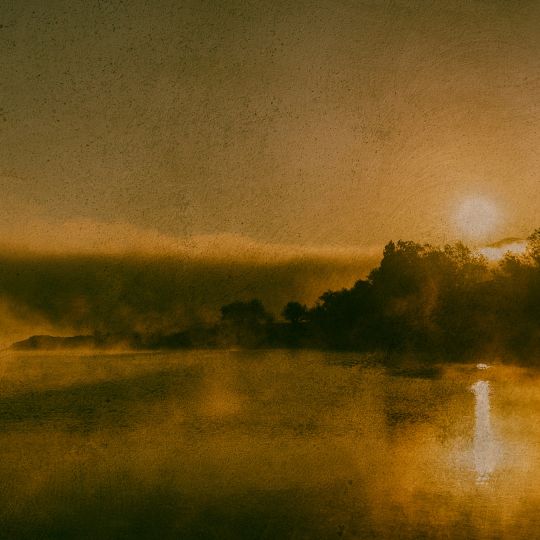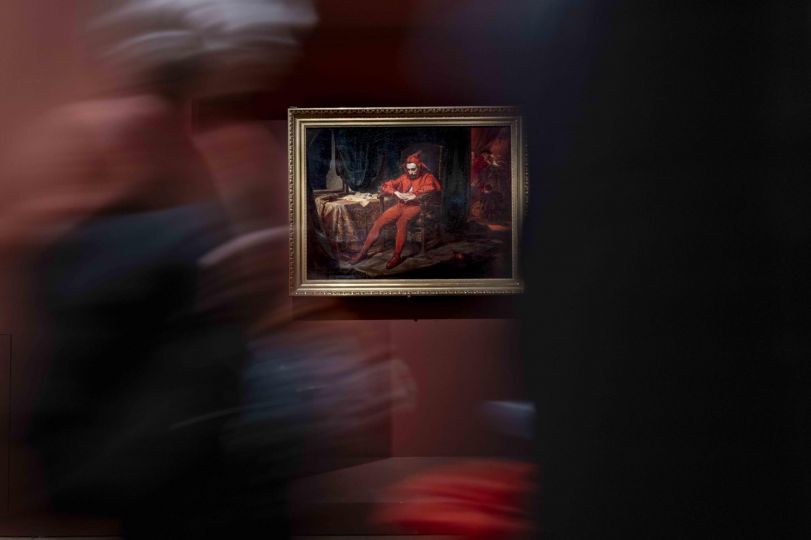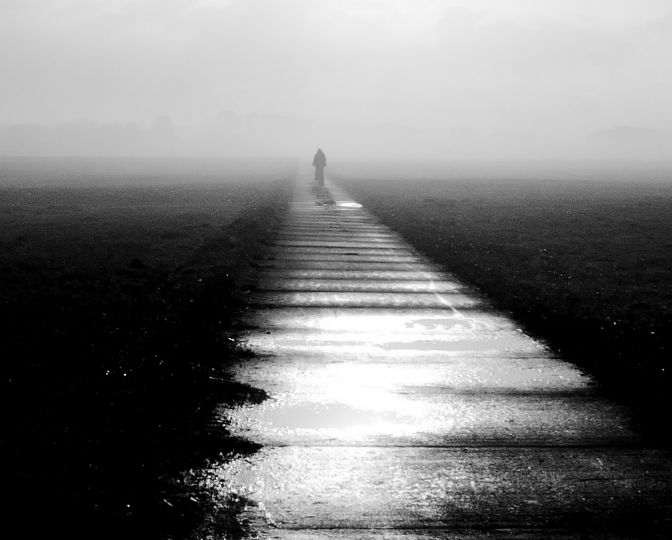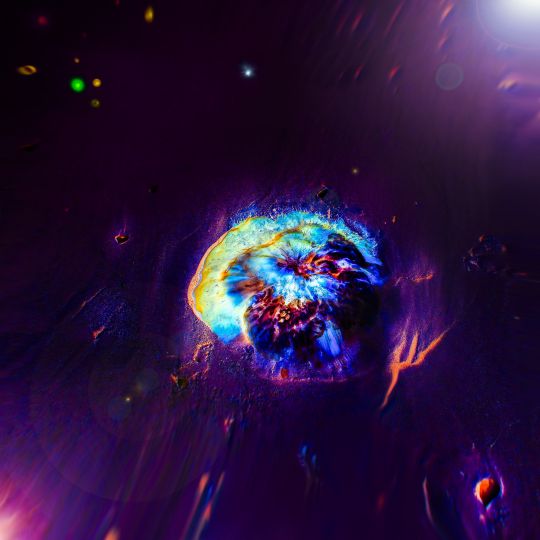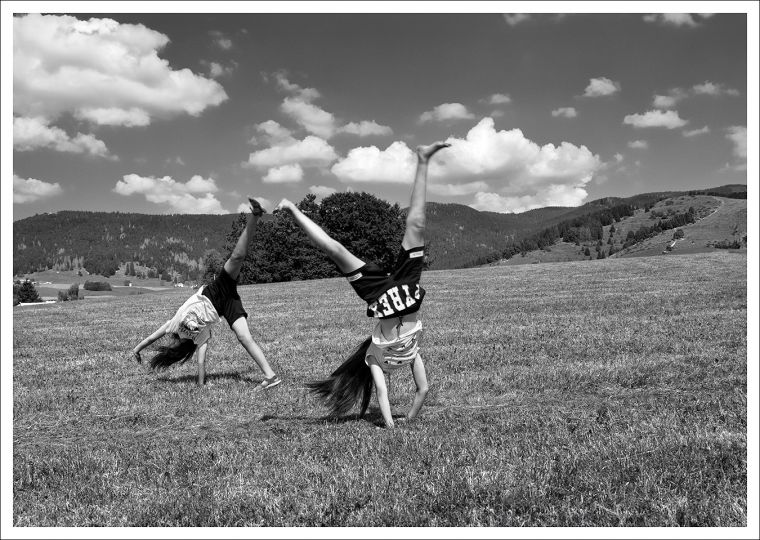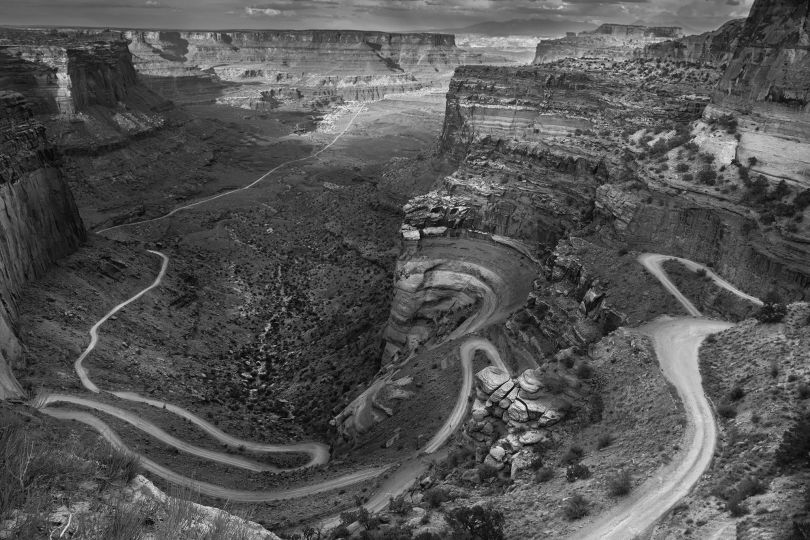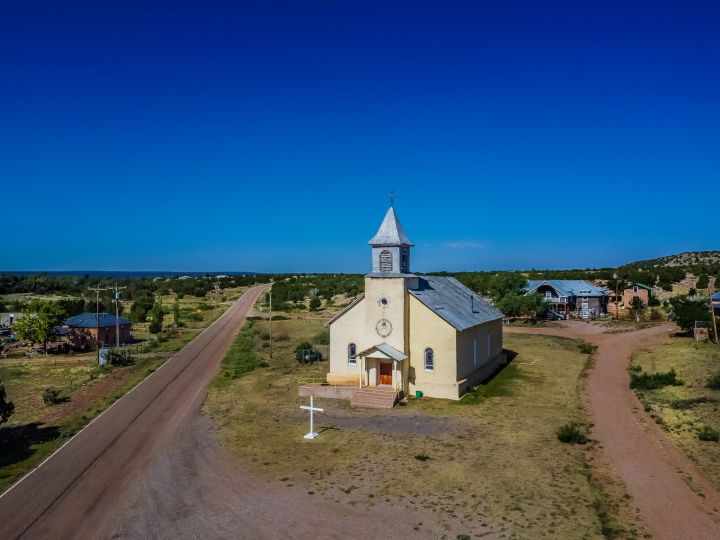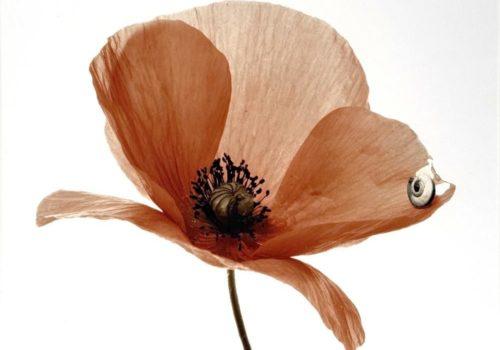The Mines
An insight from my longest journalistic collaborator, Charlie Angus, was that an underground mine in its entirety can never been seen, it has to be imagined. From 1991 to 2003 I photographed Canadian mining communities in Northern Ontario and Quebec in all their beauty and tragedy. When I worked on this project, photography was in the pre-digital film era.
My goal then, as it remains today, is for you to connect the materials you interact with daily to the issues and workers who produce them.
Imagination and reality are constant themes in these images from the frontlines of the international photographic economy. Nearly all my images taken underground were made in the dark, illuminated by my flash. When I was taking the photographs, all I could see in the viewfinder was the white circle of the miner’s headlamp; the rest of the frame was dark. Mostly, I could not see what I was photographing, I guessed what was in my camera frame. If the drills were running, it was over 100 decibels of ear-shattering sound, billowing a fog of dust and water mist in the air that was sometimes mixed with diesel exhaust from scoop trams. The workplace had no chairs, I sat mostly on heaps of blasted rock slick with oil and water from the drills’ mist, a reminder of what we were breathing in down there. For over a decade I spent months underground in the dark with miners for entire eight- to twelve-hour shifts to witness and document every detail of the work.
Though the majority of my and writer Charlie Angus’s work were done independently in the 1990s, we conducted fieldwork together on and off and most intensively during 2002-03 before he entered federal politics. We collaborated on two books on mining, which are Industrial Cathedrals of the North (Between the Lines 1999) and Cage Call: Life and Death In The Hard Rock Mining Belt (Photolucida, 2005). The photographs are an extensive archive, and the majority of images have never been printed or published. More than 30-years since the start of this project when I was just out of art college, this publication is a small sample of rare or unseen work that is not only about mining, but also about the politics of photography and our connection to it. It was always clear to me: mining and photography are inextricably intertwined, photography cannot exist without the mines, and we all digitally consume what they produce. The workers must be seen, not abstracted and or ever only imagined.
Louie Palu
From the exhibition :
Cage Call: Life and Death in the Hard Rock Mining Belt.
Curator Gaelle Morel
Sept 13-Dec 9, 2023
The Image Centre
33 Gould St.
Toronto, ON M5B 1E9, Canada
https://theimagecentre.ca/exhibition/louie-palu-cage-call/
The Photographer at The Face
Text by Siobhan Angus
In 1947, Kodak Photo Magazine printed a photograph of the silver vault at the Kodak Park plant, explaining “That pile of big metal bars below—and the black image in one of your Kodak Film negatives—are the same substance. Silver. Pure, metallic silver.” Indeed, photography required excessive amounts of mined materials—photographic industries consumed 25 percent of silver produced worldwide in the twentieth century. Digital photography is even more mineral-intensive: 84 percent of the stable elements on the periodic table are used in smartphones, while the infrastructure to store, edit, and share photographs requires further mined materials. Read through an object-based lens, a photograph is a material trace of mining that reveals, in turn, that photography emerges from the mine.
Cage Call is, at its heart, about photography itself: about the raw materials that make the medium possible and the environmental violence and physical labor that underlies that possibility. In 1991, Louie Palu, then a recent Ontario College of Art graduate, traveled to the Macassa mine in Kirkland Lake, Ontario. The self-funded, month-long project initiated a twelve-year documentary photography project, Cage Call, which would take Palu to eighteen mines—primarily gold, but also silver—across Ontario’s north.
Globally, mining is a Canadian story: over 75 percent of mining corporations worldwide are headquartered in Canada. With some of the richest hard rock mines in the world, Northern Ontario produces gold, silver, nickel, iron, platinum, and uranium, metals critical to economies, technology, and, indeed, photography. Mining’s labor history, however, attracted Palu. His father, a stone mason and Italian immigrant, was working in Kirkland Lake and introduced Palu to the geologist Frank Ploeger. Ploeger helped Palu secure access underground at the Kerr Addison Mine, the second-largest gold producer in North America: roughly 11 million ounces of gold were mined there. Despite the economic significance of the Kerr Addison, it is a place very few people ever see. Mines are closed worksites as there are obvious safety concerns about going underground. Palu built upon this initial access secured by Ploeger by building relationships with miners, unions, and corporations. Through long-term relationship-building, he built a rare body of work that tells us something profound about the history of photography.
Ontological debates about photography’s nature have long vexed scholars and artists—is it an art or a science; evidentiary or aesthetic? Often the terrain is phenomenological, centering on the experience of encountering the photograph. Cage Call shifts our frame of reference from the individual encounter to the structural forces of labor and capitalism that enable photography as an industry. Here, Palu complicates one of photography’s foundational myths. A fantasy of weightless immateriality runs throughout photographic discourse. But for photography to promise unmediated transparency—the mirror, the window, the lens—immeasurable amounts of earthly materials must be stripped from the earth. As Kodak summarized, the “treasure behind your snapshot” was
made possible by “dig[ging] metal out of the dark earth.” Rather than dwell on the implications of this statement, they quickly shift emphasis to photography’s “miraculous,” alchemical transformations. Focusing on the material itself obscures the histories of labor exploitation, colonization, and environmental degradation that underpin the photographic image—histories that Palu brings back into the frame.
Photography’s emphasis on immaterial ethereality evokes what Marx calls commodity fetishism: capitalism directs attention to the magical, transcendent nature of the commodity, which seems to transcend its material origins. This is also how extractivism functions: while mining quite literally shapes our world, extractive capitalism works to keep industrial production out of sight. Consumer capitalism encourages us to forget how commodities are produced and at what cost.
Palu’s miners project is a foundational rethinking of mining and photography—most significant photographic studies of mining center on coal, which has divergent labor and environmental histories. In hard rock mining, the earliest precedent is Timothy O’Sullivan’s photographs of silver mining at Comstock Lode taken for the U.S. Geological Survey (1868). O’Sullivan took some of the first photographs underground. Despite the technical innovation of the images and widespread interest in Comstock Lode’s silver deposits, only one of O’Sullivan’s images was reproduced in the final report: a photograph of miners above ground. The suppression of the underground images suggests that culturally, we prefer not to look at the labor that makes our world. South African photographer David Goldblatt’s On the Mines (1973) is the most important antecedent to Palu’s work, both formally and in terms of ethical orientation. Goldblatt captured the complexity of life in Apartheid South Africa’s extractive zones, capturing the impact of mining on South Africa and how it shaped the racial divisions and exclusions of the city. Palu engages O’Sullivan and Goldblatt to bring mining histories into the present.
Palu captured mining in a transition period for both industry and photography at the end of the twentieth century, driven by automation and technology. In this context, Palu’s labor-centric framing could be read as a romantic portrayal of a vanishing way of life. In Northern Ontario, mines were closing. Multinational corporations bought out home-grown companies like Inco and Falconbridge. Increased mechanization and technological expansion weakened labor power. The 1990s also marked the end of the analog photography era, framed by many as the “end of photography.” Palu’s insistently materialist framing was out of step with the period, where the predominant narrative was that the world had changed. For instance, the photographer Sebastião Salgado, who documented mining in South America, reflected that his 1993 book Workers: An Archaeology of the Industrial Age was “a farewell to a world of manual labor that is slowly disappearing and a tribute to those men and women who still work as they have for centuries.” Salgado proposes that a world fueled by human labor was ending. Pace Salgado, Palu nuances the growing body of work on photography’s material foundations by emphasizing labor as the central axis of mining.
Thirty years later, however, we can conclude that Palu captured a period of transition that resulted in scaling up, rather than endings. Across Canada, mines continue to supply critical metals that power the networked world. Technology, rather than reducing our reliance on extraction, has required a scaling up of extractive intensiveness: while the world’s population has doubled since the 1970s, resource extraction has tripled. Digital technologies made photography more ubiquitous and energy-intensive: trillions of photographs are taken on smartphones annually. The history Palu documented, then, is more critical than ever.
What, specifically, do Northern Ontario mines tell us about the history of photography? In 1903, silver was discovered in Cobalt, launching mining in the region. Cobalt supplied the world with silver as demand for the precious metal skyrocketed following the Kodak Brownie camera’s release and amateur photography’s rise. Metal extracted from the Precambrian shield was refined into silver bullion and shipped to New York and London, where it was bought and sold on international commodities trading markets. In metal markets, these pieces of the earth metamorphized into a commodity and, when further abstracted by financialization onto the stock exchange, into a speculative object. Silver and gold mines are the front line of the stock market and form the material possibilities of the image.
The glamour of abstract value obscures local histories of labor and land. Palu’s regional focus and durational engagement is a corrective to corporate narratives of mining history, which sanitize the often fraught histories of the mine. In Cobalt, for instance, Palu documented the scarred landscape left behind after the mines closed, a landscape forever altered by rapacious extraction. Close attention to regional histories is an essential entry point to understanding what mining costs. Consider the Kerr Addison Mine, where Palu first went underground. Gold was discovered at the site by Teme-Augama Anishnabai chief Ignace Tonené. The discovery triggered the Larder Lake gold rush of 1906, launching the region as a major gold producer. However, white prospectors stole Tonené’s claim—Tonené saw none of the profits of one of the biggest gold finds in history. Resource extraction in Canada is fundamentally colonial, and the benefits and costs of extraction are unevenly distributed. Following Ariella Azoulay, we might conclude that one precondition of the photograph is the imperial occupation of Indigenous land in the Americas.
Labor forms the core of the series. Unlike Edward Burtynsky, who also photographed Canada’s extractive landscapes, the human has always been central to Palu’s work. Cage Call links underground work with the social and family lives of the miners. The series ranges from the workplace (the shaft, the cage, the picket line) to the community (the church, the bar, the “widows table” where mining widows meet). Throughout, militant labor organizing is front and center. Palu proposes that the miner—and the communities surrounding the mines—are critical components of the photographic supply chain. We can draw a connective thread between Palu’s photographs and the collection of the Image Center, soldered by the precious metals that make photography possible. Palu’s fusion of the mine and photography invites a reflection on the complicity of artists and art institutions with the exploitative forces of global capitalism. Photographing the mine and the communities that develop around them provides critical insight into social, geopolitical, and economic systems that sustain our world as it is.
Mining provides the raw materials that give our world form. Focusing on the mine reveals photography is enmeshed within global extractive capitalism, a position of implication that is relational and material. Photography’s embeddedness within compromised systems makes it a valuable place to initiate critique; grappling with the cultural reliance on resource extraction becomes a starting point for a larger reckoning. Palu’s photographs ask us to unflinchingly look at what it means to extract metals from the earth.
Louie Palu is a photographer and filmmaker whose work has examined social political issues for 30-years. His work has been selected for a Guggenheim Fellowship and World Press Photo Award. His work has appeared in The New York Times, The Washington Post, National Geographic, The Guardian, and is held in numerous collections including the Museum of Fine Arts Boston and National Gallery of Art in Washington D.C. Louie is represented by Agence VU and Stephen Bulger Gallery.
Siobhan Angus
Louie Palu is a photographer and filmmaker whose work has examined social political issues for 30-years. His work has been selected for a Guggenheim Fellowship and World Press Photo Award. His work has appeared in The New York Times, The Washington Post, National Geographic, The Guardian, and is held in numerous collections including the Museum of Fine Arts Boston and National Gallery of Art in Washington D.C. Louie is represented by Agence VU and Stephen Bulger Gallery.

